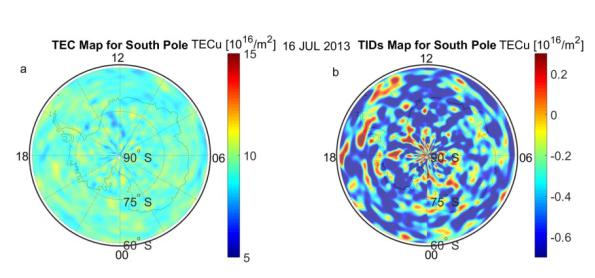MicrosoftInternetExplorer402DocumentNotSpecified7.8 磅Normal0MicrosoftInternetExplorer402DocumentNotSpecified7.8 磅Normal0
Dr. Shishir Priyadarshi, postdoc of Prof. Qinghe Zhang attended URSI 2017 held during 19-26, August 2017 at Montreal, Canada. He presented his work in the form of an oral presentation entitled“A Study of Traveling Ionospheric disturbances and Their Associated Scintillation Behaviors at South Pole”and contest for the URSI Young Scientist Award. Together with the Institute of Space Science, Shandong University, Weihai China, Thayer School of Engineering, Dartmouth College, Hanover, New Hampshire, USA and Istituto Nazionale di Geofisica e Vulcanologia Rome, Italy, are also involved in this research investigation. A new method for analyzing the travelling ionospheric disturbances (TIDs) is developed by using two B-spline basis functions of degree 4 on the total electron content (TEC) data from the ground-based global positioning system (GPS) receivers. This method enhances the spatial resolution to about 0.1ᴼ(geographic latitude) x 0.1ᴼ(geographic longitude), which is useful in studying all scale (small, medium and large) TIDs.

MicrosoftInternetExplorer402DocumentNotSpecified7.8 磅Normal0
Figure 1. An example of smoothed TEC and B-spline method calculated TIDs map for South Pole on 16 JULY 2013, (a) median filtered (~0.1) smoothed GPS TEC map; (b) B-spline technique calculated TIDs map.

MicrosoftInternetExplorer402DocumentNotSpecified7.8 磅Normal0
The Young Scientist Awards are presented at the General Assemblies of URSI and at the URSI Atlantic Radio Science Conferences (AT-RASC) to recognize an international group of individuals who have made innovative contributions and discoveries in multidiscipline research related to electromagnetic fields and waves. After the careful consideration and selection, the Young scientist award panel has selected Dr. Shishir Priyadarshi, URSI 2017 Young Scientist award recipient for the commission G. He also visited the Canadian Space Agency (CSA) and Hydro Quebec’s research Center, Canada during his attending of URSI 2017 GASS.
URSI:
The International Union of Radio Science (Union Radio-Scientifique Internationale), a non-governmental and non-profit organization under the International Council for Science, is responsible for stimulating and co-ordinating, on an international basis, studies, research, applications, scientific exchange, and communication in the fields of radio science.
COMMISSION G: Ionospheric Radio and Propagation (including ionospheric communications and remote sensing of ionised media).
The Commission deals with the study of the ionosphere in order to provide the broad understanding necessary to support space and ground-based radio systems. Specifically, the Commission addresses the following areas:
1.Global morphology and modeling of the ionosphere;
2.Ionospheric space-time variations;
3.Development of tools and networks needed to measure ionospheric properties and trends;
4.Theory and practice of radio propagation via the ionosphere;
5.Application of ionospheric information to radio systems.
To achieve these objectives, the Commission co-operates with other URSI Commissions, corresponding bodies of the ICSU family (IUGG, IAU, COSPAR, SCOSTEP, etc) and other organisations (ITU, IEEE, etc.)
| 网站声明:转载或引用本文,须注明本文出处,违者必究 |
| 